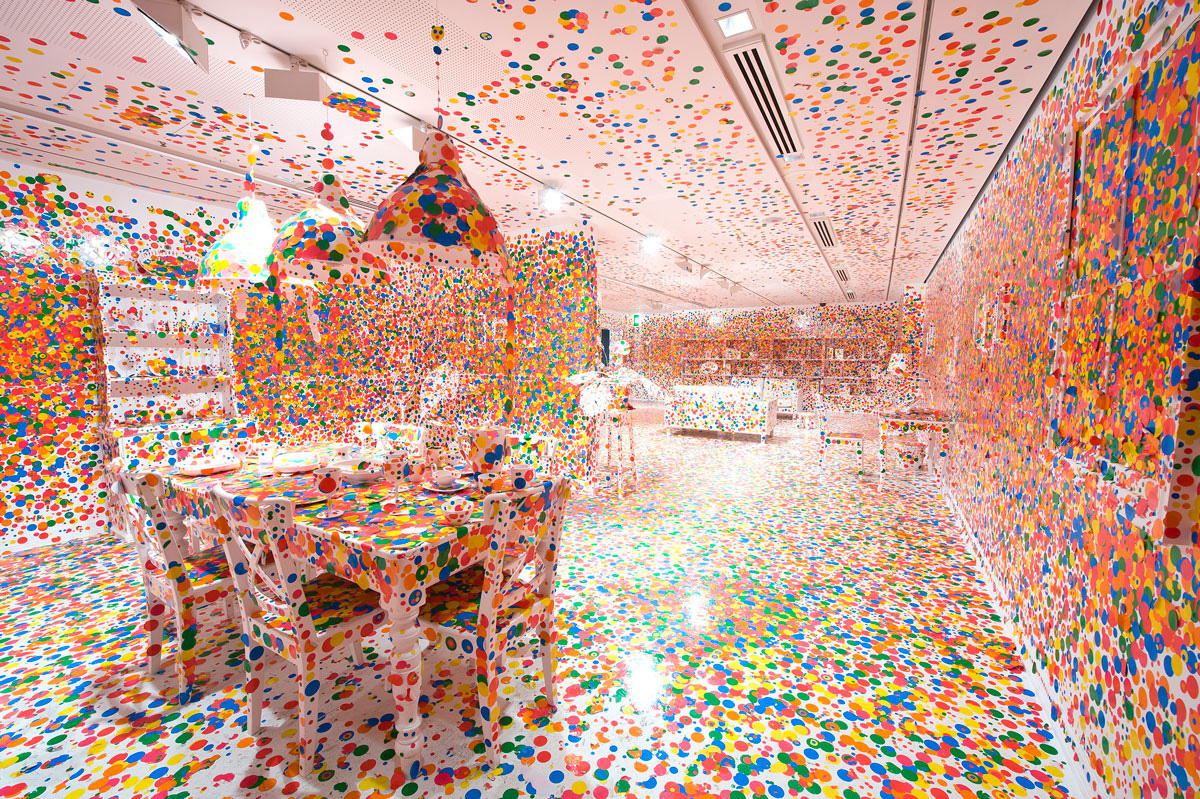Folklife Friday is a weekly digest of arts and culture articles, podcasts, and videos from across the web. Read on for a selection of the week’s best cultural heritage pieces, and don’t forget to check back next Friday for a new set of weekly picks.
Yayoi Kusama Made the Ultimate Instagram Exhibit
At 87, artist Yayoi Kusama’s work is as evocative as it’s ever been, as Anna Furman explains in this New York Magazine profile. The Tokyo-based artist’s polka dot-dappled work is as creative as it is cathartic, visually capturing the hallucinations that plagued her as a child. “She envisioned a world obliterated by dots, channeling her hallucinations into drawings of flowers and abstract, swirling patterns.” Kusama's Infinity Mirrors will show at the Smithsonian's Hirshhorn Museum February 23 to May 14.
Chef Margarita Carrillo Arronte on Why Mexican Cuisine Is a UNESCO Treasure
For world-renowned chef and TV host Margarita Carrillo Arronte, the origins of traditional Mexican fare are inextricably bound up in notions of culture, community, and place. In this interview, Carrillo Arronte examines the layered history of Mexican dishes, shares her favorite bay scallop ceviche recipe, and adds that when it comes to Tex-Mex food, “I know it’s good, but it’s not Mexican.”
Translation—and Migration—Is the Lifeblood of Culture
“How are we different from each other, and how are we the same, especially when our origins and backgrounds differ in dramatic ways?” Poet George Szirtes poses the question in this look at literature in translation. For Szirtes, who moved to England from Hungary at age 17, it’s only in exploring fiction from authors near and far that we can define our own identity. “The works of foreign writers are not entirely about ‘them.’ They are also about us.”
Ben Biayenda’s Marker Drawings Celebrate Black Beauty in All Its Colors
French-Congolese artist Ben Biayenda was long drawn to the work of Jean-Auguste-Dominique Ingres, Henri Rousseau, and others. While studying in Paris, Biayenda found himself, at once, taken with the work that surrounded him and frustrated with its lack of black representation. In response, he created a series of portraits that put black women at the fore and “reflected his own standards of beauty, while drawing on the poses and atmosphere of the classic works he admired.”
The Tibetan Monk Who Shoots Snow Leopards
Set against the Himalayan Mountains, Drukyab’s photographs of snow leopards, birds, and wild goats paint an absorbing picture of the Tibetan Plateau. Drukyab, a monk at the Payul monastery, reflects in this piece on his foray into photography and, by extension, conservation. “The leopard has become a symbolic animal, and I use its power to protect everything around it.” For more stories from communities across the Mekong Delta, see our Mekong Lifeways project.
Special thanks to Elisa Hough and Sonam SilongwengJia for their contributions to this week’s digest.
A scene from Yayoi Kusama's "The Obliteration Room," 2002 to present. Collection: Queensland Art Gallery, Brisbane, Australia. Photo by QAGOMA Photography, ©Yayoi Kusama.


